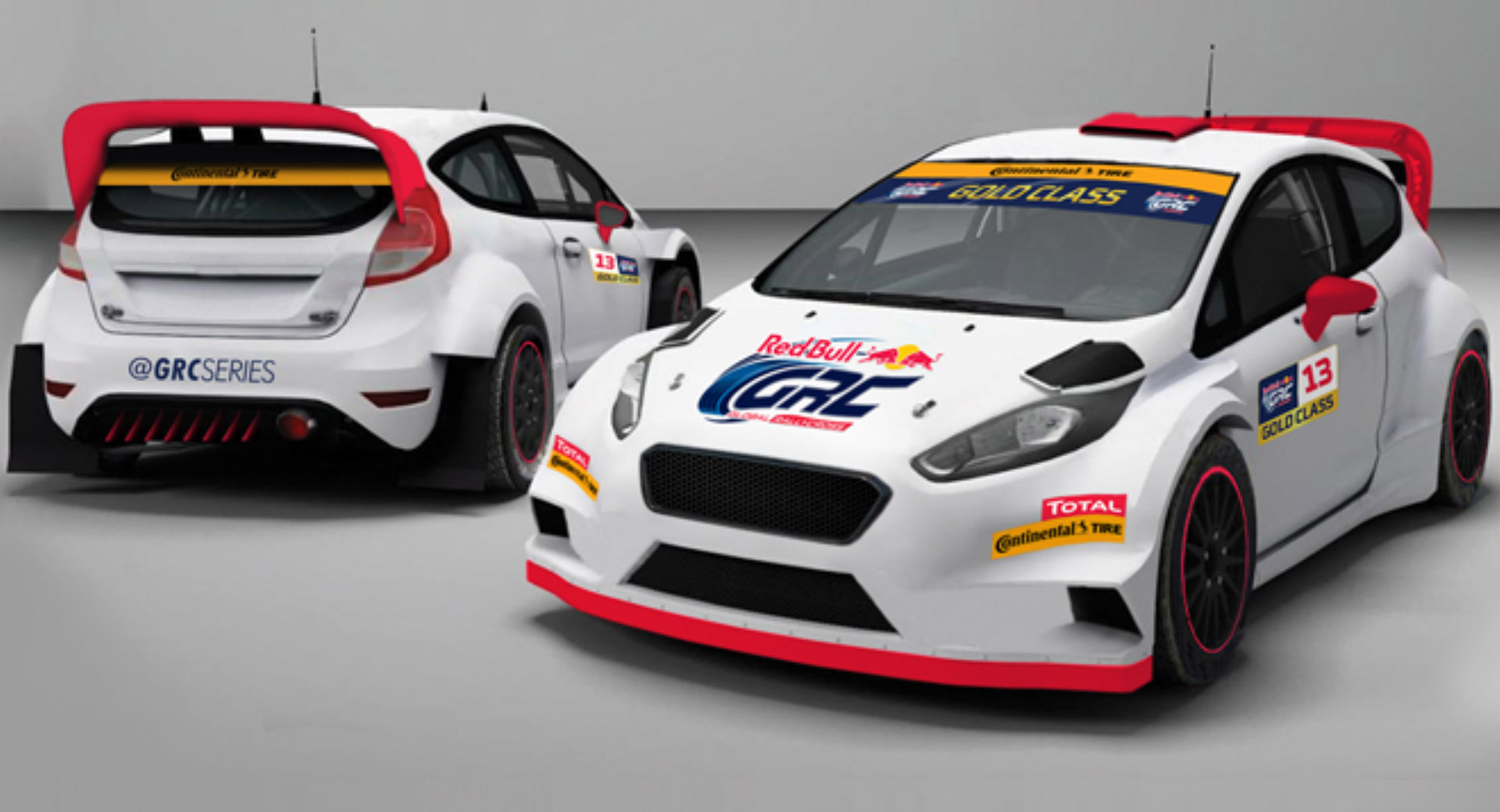The term “supercar” means different things in motorsports than it does in the automotive marketplace. In Australia, for example, it refers to traditionally V8-powered touring cars. But in rallycross, it stands for the top class of machinery. Those are going the way of the dodo, however, as the Global RallyCross Championship has killed it off and replaced it with two new categories.
The Supercars class has served until now as the top tier of the GRC. The cars pack 600 horsepower and all-wheel drive to deliver 0-60 times of under two seconds. No wonder they call them supercars, then.
The vehicles have been based mostly on hatchbacks and small sedans like the Ford Fiesta ST, Subaru WRX STI, Volkswagen Beetle, and Hyundai Veloster Turbo. Those will now die off, however, to be replaced by more cost-effective cars.
The new Gold class will be implemented already this season, based on the lower-tier GRC Lites chassis. Those in turn are all based on the Ford Fiesta, with 320-horsepower Ford Duratec engines. Expect higher outputs from the upgraded Gold versions.
Starting in 2019, a higher Platinum class will slot in above the Gold as the top tier currently occupied by the Supercars. The new Platinum cars will also be built around a standardized tube chassis, currently being developed by MJP Racing. Though specifications have yet to be announced, they’ll be powered by a higher-displacement engine than the current Supercars, designed for even higher performance while increasing longevity and endurance at the same time.
“We share with GRC a strong belief and passion in rallycross, which brings together the know-how to produce excellent cars and an exciting race format,” said MJP CEO Max J. Pucher. “Each year we see many talented drivers and teams who simply cannot find the needed sponsors with huge budgets to compete at a world-class level under the current Supercars regulation. The growing rallycross fan base wants more such racing with more action and more of their favorite drivers.”
“The introduction of the GRC Platinum class positions the sport of rallycross for the future by creating an affordable, yet better performing, next-level vehicle,” added GRC CEO Colin Dyne. “Our goal is to open up the competitive landscape to make it more accessible for drivers and teams to participate and showcase their driving skills.”
Along with the new classes, series organizers have announced a new European GRC series that will run separately from the existing American championship. That ought to pit the GRC even more directly against the rival FIA World Rallycross Championship based primarily in Europe, and open up further avenues for aspiring rallycross drivers and teams to compete.








